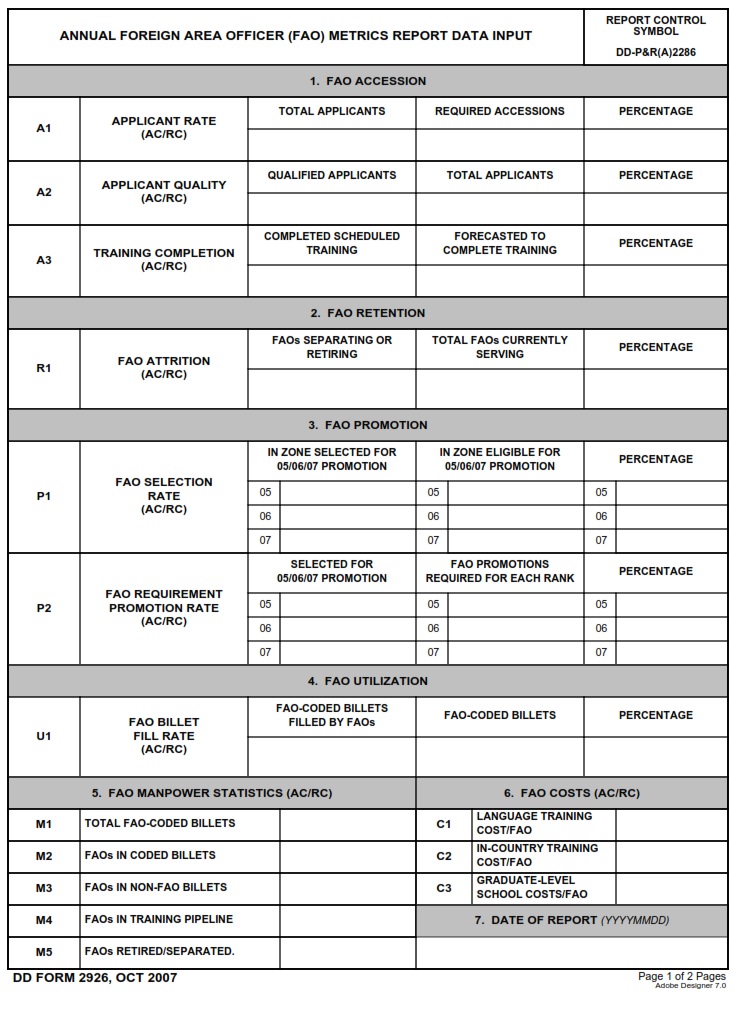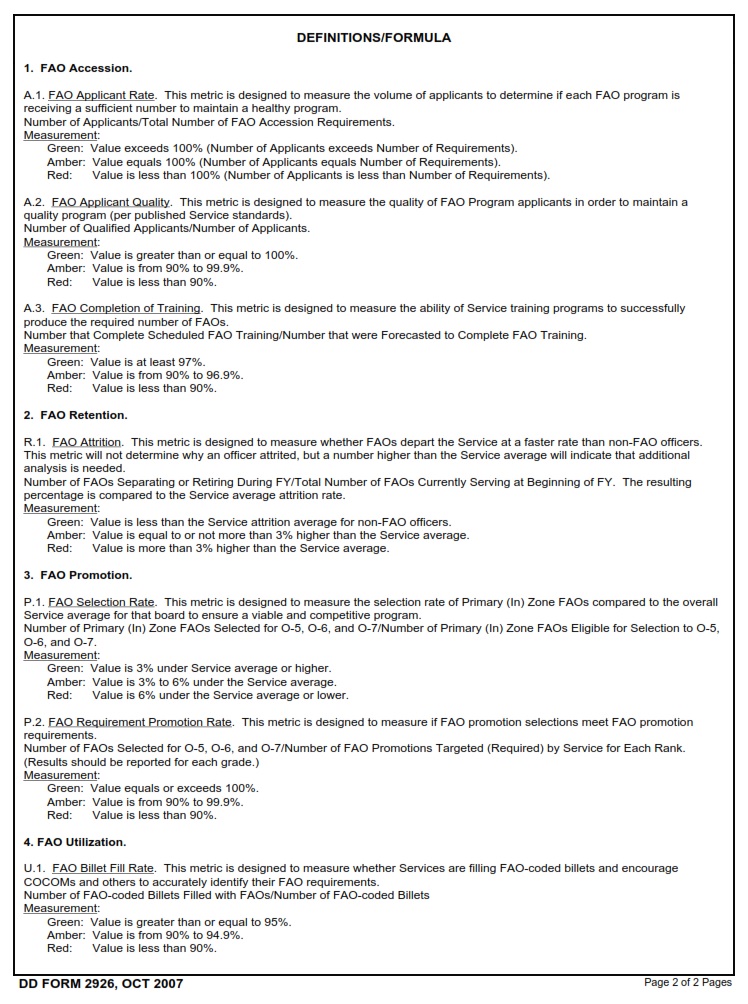Table of Contents
FREE-ONLINE-FORMS.COM – DD Form 2926 – Annual Foreign Area Officer (FAO) Metrics Report Data Input – In the world of international affairs, the role of Foreign Area Officers (FAOs) is crucial in shaping diplomatic strategies and fostering relationships with foreign nations. Behind the scenes, a key document plays a pivotal role in assessing their performance and providing valuable insights into their work – the DD Form 2926: Annual FAO Metrics Report Data Input. This unassuming form holds a wealth of information that sheds light on the complexities and challenges faced by FAOs as they navigate intricate geopolitical landscapes around the globe. Join us on a journey to uncover the hidden stories and impactful contributions captured within this seemingly mundane but significantly impactful report.
Download DD Form 2926 – Annual Foreign Area Officer (FAO) Metrics Report Data Input
| Form Number | DD Form 2926 |
| Form Title | Annual Foreign Area Officer (FAO) Metrics Report Data Input |
| Edition Date | 10/1/2007 |
| File Size | 98 KB |
What is a DD Form 2926?
The DD Form 2926, also known as the Annual Foreign Area Officer (FAO) Metrics Report Data Input, serves as a crucial tool in assessing and analyzing the performance of FAOs in various foreign areas. This form collects data on FAOs’ language proficiency, cultural knowledge, and regional expertise, providing valuable insights into their effectiveness in carrying out diplomatic and military missions abroad. By tracking metrics such as training completed, deployments undertaken, and engagement with local populations, DD Form 2926 aids in evaluating the readiness and competency of FAOs operating in complex international environments.
Moreover, the information gathered through the DD Form 2926 enables decision-makers to tailor training programs and assignments to better meet the evolving needs of global security challenges. It allows for strategic planning by identifying areas where additional resources or support may be required to enhance the capabilities of FAOs working around the world. As globalization continues to shape international relations, utilizing tools like the DD Form 2926 becomes increasingly vital in ensuring that FAOs are well-prepared to navigate diverse cultural landscapes and effectively promote U.S. interests on a global scale.
Where Can I Find a DD Form 2926?
If you are looking to access DD Form 2926, the Annual Foreign Area Officer Metrics Report Data Input form, there are several avenues you can explore. One of the most convenient options is to visit the official website of the Department of Defense (DoD) where you can find a digital copy that can be easily downloaded and filled out online. Additionally, many military bases and installations have physical copies of this form available for personnel who prefer a hard copy.
For those in need of immediate assistance or guidance in filling out DD Form 2926, reaching out to a superior officer or contacting your unit’s administrative office can also be beneficial. They may be able to provide additional resources or direct you to the appropriate channels for obtaining this important document. Remember, accuracy and timeliness in submitting this report are crucial for maintaining effective data input for Foreign Area Officer metrics analysis.
DD Form 2926 – Annual Foreign Area Officer (FAO) Metrics Report Data Input
The DD Form 2926, the Annual Foreign Area Officer (FAO) Metrics Report Data Input, serves as a crucial tool for monitoring and analyzing the performance and effectiveness of FAOs in their designated regions. This detailed report captures essential information on language proficiency, cultural knowledge, training completion, and overall operational readiness. By meticulously documenting these metrics, military leaders can identify trends, assess capabilities, and make data-driven decisions to enhance the FAO program’s impact.
Through the analysis of the data input on DD Form 2926, stakeholders gain valuable insights into the strengths and areas for improvement within the FAO community. The comprehensive nature of this report allows for a holistic evaluation of individual FAOs as well as collective effectiveness in executing strategic missions worldwide. By leveraging this data effectively, military planners can tailor training programs, assign resources strategically, and optimize the performance of FAOs in challenging international environments.

